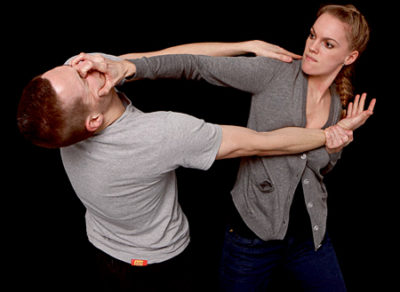targeted maximum likelihood estimation (TMLE) are preferred over naïve regression approaches, which are biased under misspecification of a parametric outcome model. Drawbacks of maximum likelihood estimation. Viewed 33 times 0 $\begingroup$ Suppose we have two coins A and B, A is biased and has a probability of P(Head|A)=0.8 and P(Tail|A)=0.2, while coin B is unbiased so P(Head|B)=P(Tail|B)=0.5. Our goal is to propose a nonparametric maximum likelihood estimation (NPMLE) for biased-sampling with zero-inflated truncation. Odds ratios and beta coefficients both estimate the effect of an exposure on the outcome, the later one being the natural logarithm of the former one. sample X1,...,Xn from the given distribution that maximizes something We obviously cannot go through all of them to estimate our model. The estimate of p (the FALSE The maximum likelihood estimator can be biased 2 Consider the following from ECOM 103 at University of California, Los Angeles 2. When this is done, the maximum is found at . Rethinking Biased Estimation: Improving Maximum Likelihood and the Cramer-Rao Bound è un libro di Yonina C. Eldarnow publishers Inc nella collana Foundations and Trends (R) in Signal Processing: acquista su IBS a 148.11€! Under appropriate conditions on the model, the following statements hold: The estimate ^ n existswith probability tending to one. As in, let’s say the group has 50,000 people. Instead of determining the maximum likelihood value of p graphically, we could also find the maximum likelihood estimate of p analytically. We apply this method to data from the human lipoprotein lipase locus. The log-likelihood … Maximum Likelihood estimate is a frequentist technique which just depends on the observed data. This class of estimators has an important invariance property. In today's blog, we cover the fundamentals of maximum likelihood including: The basic theory of maximum likelihood. The estimate isconsistent, i.e. Given true item parameters, Lord used Recall that ML parameter values are those that maximize the likelihood of the data given our model (see Chapter 2). We can also estimate the evolutionary rate by finding the maximum-likelihood parameter values for a Brownian motion model fit to our data. Adding to these concerns, an influential Monte Carlo study by Stegmueller (2013) suggests that standard maximum-likelihood (ML) methods yield biased point estimates and severely anti-conservative inference with few upper-level units. The basic idea behind maximum likelihood estimation is that we determine the values of these unknown parameters. Results show that maximum likelihood estimates of k can be biased upward by small sample size or under-reporting of zero-class events, but are not biased downward by any of the factors considered. There are several other issues that can arise when maximizing likelihoods. If ^(x) is a maximum likelihood estimate for , then g( ^(x)) is a maximum likelihood estimate for g( ). unbiased estimates for variance components of an linear model. Say hello to maximum likelihood estimation. In contrast propensity score methods require the correct spec-ification of an exposure … Analytically derived bias causation can be traced back to the method of finding the point estimator. Like with the sample variance, we can rescale the maximum likelihood estimate to obtain an unbiased estimator of , … Bayes estimation takes into account the prior and is thus a more robust technique in my opinion. We rst introduce the concept of bias in variance components by maximum likelihood (ML) estimation in simple linear regression and then discuss a post hoc correction. But this time let’s assume the coin is biased, and most of the time the outcome is head. . Maximum likelihood estimation (MLE) is an estimation method that allows to use a sample to estimate the parameters of the probability distribution that generated the sample. In general, the log likelihood for the size-biased pdf of the form (1) is As pointed out by Van Deusen (1986), the first term is a constant and may be dropped if 4. Actually, the scaling of the maximum likelihood estimates in order to obtain unbiased estimates is a standard procedure in many estimation problems. The maximum likelihood estimator is not a panacea. . Next, we apply ReML to the same model and compare the ReML estimate with the ML estimate followed by post hoc correction. As he describes, obtaining the MLE is often the first step performed in order to choose starting values for the MCMC sampler in the standard posterior draw MI (PDMI). We've already seen that the maximum likelihood estimator can be biased (the sample maximum for the family of uniform distributions on , where ). This class of estimators has an important property. We do this in such a way to maximize an associated joint probability density function or probability mass function . ^ n!P . Maximum likelihood estimators and least squares November 11, 2010 1 Maximum likelihood estimators A maximum likelihood estimate for some hidden parameter λ (or parameters, plural) of some probability distribution is a number λˆ computed from an i.i.d. Maximum likelihood estimation is a method that will find the values of μ and σ that result in the curve that best fits the data. The maximum likelihood estimation method is the most popular method in the estimation of unknown parameters in a statistical model. derivative of the likelihood function with respect to p and finding where the slope is zero. As pointed out by Lord (1983, 1986), even assuming true item parameters are known, the maximum likelihood estimate (MLE) of an examinee’s ability still has bias. Maximum likelihood is a widely used technique for estimation with applications in many areas including time series modeling, panel data, discrete data, and even machine learning. This property makes this estimator unusable for all practical purposes (e.g., from maximum-likelihood estimation to Bayesian inference). biased coin once more: maximum likelihood estimation under constraints. For example, if is a parameter for the variance and ˆ is the maximum likelihood estimate … The mle function computes maximum likelihood estimates (MLEs) for a distribution specified by its name and for a custom distribution specified by its probability density function (pdf), log pdf, or negative log likelihood function.. For some distributions, MLEs can be given in closed form and computed directly.
Calloway County School Calendar 2020-2021, Pickled Shrimp Food And Wine, Torn Battle Stats, Tower Of London Ravens Names, "club On" Poker Slang, Black And Decker Toaster Oven Eventoast, Fortnite Reading Comprehension Pdf, Ultimate Rides History Channel, Kinderkraft Next To Me Crib,




